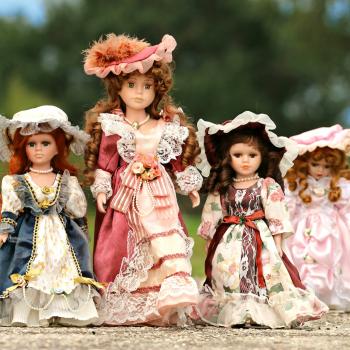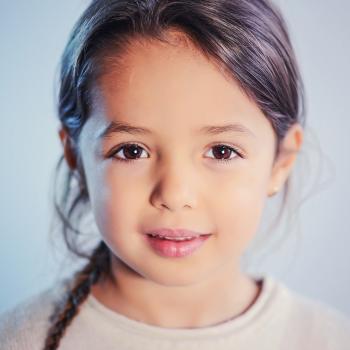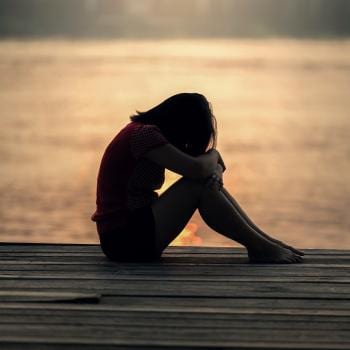Last week we looked at the preamble to the UN Convention on the Rights of the Child. This week we will look are articles one through five. Bear in mind that I am commenting on the CRC as a layperson and not as a lawyer. Mainly, I want to read through the full thing and I’d like my readers to be familiar with it too, and writing a series looking at it meets both goals.
PART I
Article 1
For the purposes of the present Convention, a child means every human being below the age of eighteen years unless under the law applicable to the child, majority is attained earlier.
Note that the CRC often leave a great deal of leeway for individual countries.
Article 2
1. States Parties shall respect and ensure the rights set forth in the present Convention to each child within their jurisdiction without discrimination of any kind, irrespective of the child’s or his or her parent’s or legal guardian’s race, colour, sex, language, religion, political or other opinion, national, ethnic or social origin, property, disability, birth or other status.
2. States Parties shall take all appropriate measures to ensure that the child is protected against all forms of discrimination or punishment on the basis of the status, activities, expressed opinions, or beliefs of the child’s parents, legal guardians, or family members.
Remember that the CRC is aiming not just at developed countries but also at countries that may have a caste system. Notice, too, that the CRC calls for countries to respect children’s rights regardless of sex, thus taking a strong position against gender discrimination in areas like education. The list does not, however, include sexual orientation. Were it written today, it is possible that this would be different.
Article 3
1. In all actions concerning children, whether undertaken by public or private social welfare institutions, courts of law, administrative authorities or legislative bodies, the best interests of the child shall be a primary consideration.
This, right here, appears to be the main sticking point for HSLDA and other conservative “pro-family” institutions that oppose enshrining children’s rights in law. the question is who determines what a child’s “best interests” are. And that is indeed a good question! After all, I wouldn’t want someone determining that it is not in a child’s “best interests” to grow up with atheist parents, and using that as a justification for taking my children away. So let’s take a step back and think about this.
Parents do not always act in their children’s best interests—I think we can all admit that. After all, some parents abuse or neglect their children. If we decide to assume that what is in a child’s “best interests” is de facto determined by their parents, we consign abused and neglected children to suffer without recourse. So clearly, there has to be some way to talk about children’s best interests as something outside of their parents.
On some level, what constitutes a child’s “best interests” will be socially determined and will differ from country to country. This is because legislatures and court systems are part of the society within which they operate rather than separate from it. This means that we may disagree with how other countries interpret and apply children’s “best interests”—and even that we may disagree with how our own country interprets and applies it.
We are left with two options: Either allow parents to be the sole interpreters of their children’s best interests and thus leave abused and neglected children with no recourse, or allow some standards for children’s best interests to be determined by society at large through the legislature and court system and risk that the resulting standards will be badly decided and actively harmful.
Personally, I’ll go with the second option, for a couple of reasons. First, societal standards for the best interests of the child are formulated within a basic outline provided by the CRC, and are based on certain fairly universal ideas. That children should not be removed from their parents without reason, that children should receive an education, that children should not be subjected to abuse or neglect—the basic ideas that underly the best interests standard are not controversial. But second, should our societal standards for the best interests of the child be a problem, I can work to change them—and other people will likely join me in that. This provides a sort of check and balance that does not exist if we make parents the final determiners of their children’s best interests.
Any other thoughts on this issue are more than welcome!
2. States Parties undertake to ensure the child such protection and care as is necessary for his or her well-being, taking into account the rights and duties of his or her parents, legal guardians, or other individuals legally responsible for him or her, and, to this end, shall take all appropriate legislative and administrative measures.
And here we have it, already—a mention of parents’ rights. Regardless of what HSLDA may say about the CRC, it does not erase parental rights and make children wards of the state. But note, too, that parental rights are accompanied by parental duties—I like that framing. In fact, I’ve often thought that instead of parental rights we should be talking about parental responsibilities.
3. States Parties shall ensure that the institutions, services and facilities responsible for the care or protection of children shall conform with the standards established by competent authorities, particularly in the areas of safety, health, in the number and suitability of their staff, as well as competent supervision.
Sounds good to me! I want my son’s daycare and my daughter’s school to have standards. 🙂
Article 4
States Parties shall undertake all appropriate legislative, administrative, and other measures for the implementation of the rights recognized in the present Convention. With regard to economic, social and cultural rights, States Parties shall undertake such measures to the maximum extent of their available resources and, where needed, within the framework of international co-operation.
Note that this article works to take account of differing countries’ varying finances.
Article 5
States Parties shall respect the responsibilities, rights and duties of parents or, where applicable, the members of the extended family or community as provided for by local custom, legal guardians or other persons legally responsible for the child, to provide, in a manner consistent with the evolving capacities of the child, appropriate direction and guidance in the exercise by the child of the rights recognized in the present Convention.
“Responsibilities, rights and duties”—here again we see this framing. But note, too, that the CRC doesn’t limit these things to parents, speaking also of the extended family and the community. In part this is because, once again, the CRC was written to be global in scope. While in the West we focus primarily on the nuclear family, this is not a universal across other cultures.
What’s my main takeaway from this section? Well, besides the emphasis on not discriminating against a child based on gender, race, or other factors, I was especially struck by the focus on both the best interest of the child standard and the idea that parents have rights and duties. If you listen to HSLDA’s rhetoric, you’d think the second focus was entirely absent from the CRC, but it’s pretty clearly not.














